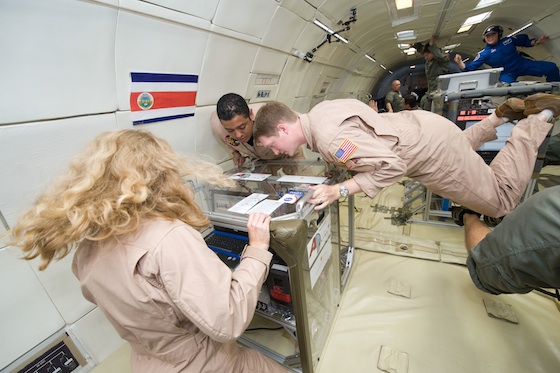Cryocooler Vibrational Characterization
PI: Chris Olsen, Ad Astra Rocket Company
PI: Chris Olsen, Ad Astra Rocket Company

- TA02 In-Space Propulsion Technologies
- TA14 Thermal Management Systems
The goal of this project is to characterize the vibrational modes of the cryocooler in varying gravity levels while precisely monitoring the cryocooler’s power consumption and cooling capacity. The specific and immediate benefit is that through this flight opportunity, Ad Astra will be able to down-select the use of this particular cryocooler and will be able to properly design a vibration mitigation mechanism to dampen transmitted vibration to the HTS magnet and brittle electrical components therein.
Through this series of parabolic flights, we will make significant progress towards TRL 5/6 (from TRL 4), especially in the design of vibration isolation mechanisms that will be required in order to safely interface with the brittle high temperature superconducting electrical leads of the superconducting magnet. In fact, it was during the FAST 2010 parabolic experiment campaign that the vibration issue was identified as a significant problem for interfacing to the brittle electrical leads. Futur
Ad Astra (VASIMR®)
NASA
The high level cryocooler vibrational characterization experiment plan focuses on the characterization of cryocooler vibrational modes and performance in μg, Lunar 0.16g, and Martian 0.38g.
The flight hardware was flown previously on Zero-G Corp.’s aircraft during NASA's FAST 2010 flight opportunities campaign. The flight box, cryocooler, cryocooler vacuum system, power electronics, control electronics, and data acquisition system will be identical. The hardware mentioned will see the addition of a simple preliminary vibration isolation mechanism and solid-state accelerometers in order to fully characterize the vibrational modes of the cryocooler assembly.

The NASA Flight Opportunities Program and the NASA Microgravity Office allowed our research team to rapidly and efficiently characterize the natural vibrational mode spectrum of a state-of-the-art cryocooler intended for use in the VF-200 engine. During the recent campaign, the flight team evaluated an initial design for mitigating cryocooler vibration in microgravity.
The series of microgravity flights performed to date by the Ad Astra Rocket Company have shown that the SunPower CryoTel line of cryocoolers are a robust technology that is ready to be used in support of the VASIMR® system and other human spaceflight applications, such as cryogenic storage of chemical propellants and radiation shielding for astronauts, among others.
Technology Details
-
Selection DateAFO1 (May 2011)
-
Program StatusCompleted
- 4 Parabolic
Development Team
-
PIChris Olsen
-
Organization
-
SponsorAd Astra
-
PartnersNASA

